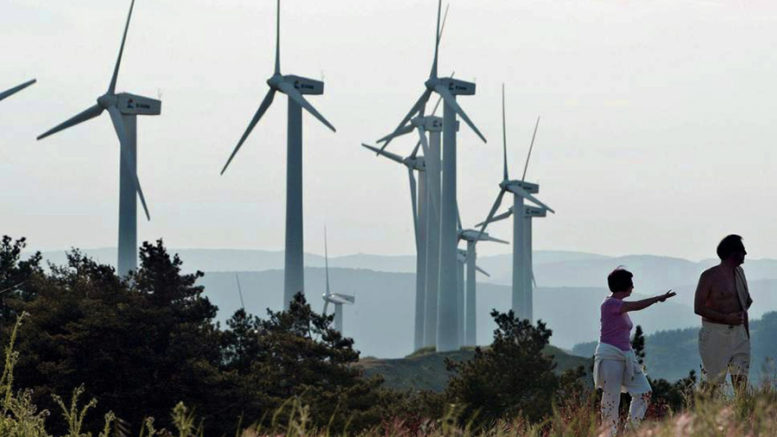Contributed by Jim Hayes
The Spanish government’s declared intention to completely switch over to renewable energy by 2050. Its aim is to slash 90 percent off carbon emissions and take a major step towards decarbonising the whole economy, and it is grabbing worldwide attention.
The plan includes installing at least 3,000 megawatts of wind and solar power each year for the next ten years.
The shift to renewables is not sudden. Spain has been a leader in this for some time. The strength of public opinion had been difficult for the pro mining conservative government to hold back the tide. Now that the Pedro Sanchez led Socialist Workers Party of Spain is in a minority government, it has a strong incentive to consolidate its position.
Holding barely more than a quarter of the parliamentary seats, it can only survive if the anti-austerity party Podemos (We Can) and the Catalan and Basque independence parties don’t vote against it. The Socialists falied to enter into a “left” coalition, because an agreement could not be struck with Podemos. In its absence, they do not have a great deal of room to maneuver and faces a high prospect of political instability, before facing the polls in 2020.
After being thwarted in an attempt to bring a modest increase to the budget by the conservatives, still wed to cutting back spending, and by those on the other side, branding it as insufficient, the government needs a way out that will win it some political capital to consolidate political support.
This led to successful negotiations in October, which brought an agreement on raising the minimum wage by 22 percent, raising pensions, increased funding for education and science, increasing disability benefits, more spending on housing and increased paternity leave. This agreement set the ground for progress on renewable energy. Both the political circumstances and the push within the Socialist Party have created the political conditions for change.
Consequently, Spain’s efforts to meet commitment to the Paris Agreement has been lifted to a higher level.
Under the plan, there will be a “just transition” from coal, in return for early retirement of mine workers, along with reskilling in in clean energy jobs and environmental restoration. A new law is to be brought in to mandate that 35 percent of all electricity, will be from renewable technologies by 2030. Nuclear power will also be phased out.
Within 11 years, public sector authorities will only be allowed to lease buildings with almost zero energy consumption, and other building must have a 35 percent improved energy consumption efficiency.
Cars with petrol and diesel engines will be banned by 2040.
This is proving to the world that much more can be done to eliminate carbon emissions when there is a political will to do so.
Laurence Tubiana, chief executive of the European Climate Foundation and former French climate envoy who helped draft the Paris accord, called the Spanish government’s intention ground breaking and inspirational.
“By planning on going carbon neutral, Spain shows that the battle against climate change is deadly serious, and that they are ready to step up and plan to reap the rewards of decarbonisation.”
It is not a done deal yet. The minority government still needs to muster the numbers. The conservatives (the Popular or Peoples Party and Ciudadanos or Citizens) still control the upper house (Senate), and therefore have the capacity to be the spoilers. Then again, they have to weigh up the political cost to them of doing this. Circumstances may hold back their opposition.
Podemos has always had a stronger stance on climate warming and environmental issues in general, and is not likely to oppose the plan.


Be the first to comment on "Spain moves to go completely renewable by 2050"